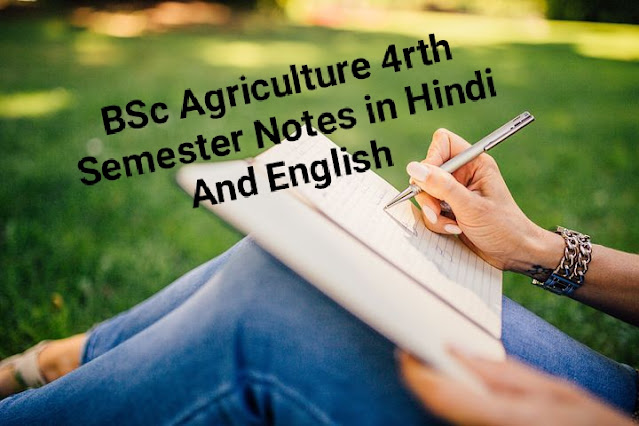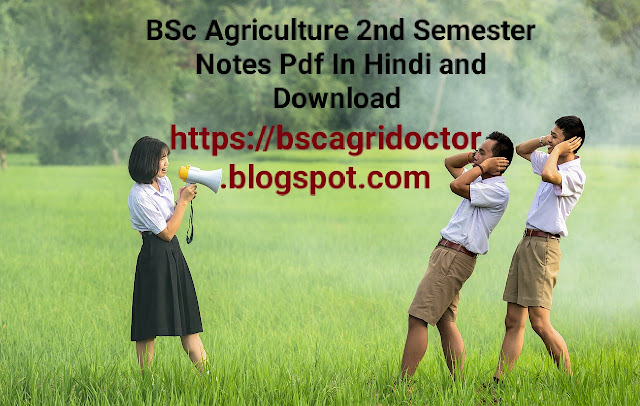Detailed Article On HISTORY AND DEVELOPMENT OF SOIL SCIENCE
IN THE HISTORY OF SOIL SCIENCE CONTRIBUTION IS MADE BY-Van Helmont, Woodword, Laws and Gilbert, Hens Jenny, Boussingault, DeSaussure, J.V. Liebig, Warington, Glinka, Hilgard, V.V. Dokuchaiev, Marbut, Leather, Scholasky, Rama moorthy etc.
Great civilization has almost invariably good soils. The dynasties of the Nile, Indus flourished along the rivers and good management of soil. Mismanagement of soil was associated with the downfall of some civilizations. Even today there are many who do not fully recognize the long-term significance of soil. This may be due to ignorance about the soils. The careful preservation of soil can be the difference between a prosperous society and poverty.
Early scientists were curious about what items growing plants needed. The search was made to identify the plant nutrients and to improve the soil ability to supply them. Until 1860 (Hilgard in Mississippi) and 1870 (V.V. Dockuchalov in Russia) soil was not considered worthy to have detailed study in its own right. Finally, soil rather than plants began to receive the major interest of many scientists who were geologist, not agriculturists or chemists. The contributions made by various scientists in the development of soil science are summarized in this chapter.
Jan Baptista Van Helmont (1577-1644) a physician/chemist, concluded from five year Willow tree experiment that increased dry matter (169 lbs. and about 3 oz.) production came primarily from water supplied since soil lost no weight. Theodore de Saussure demonstrated that plants absorbed O, and liberated CO,.the general process of respiration. In addition he found that plant absorb CO, and release O, in the presence of light, however plants died when kept in CO, free environment. De Sassure concluded that the soil furnishes only small fraction of plant nutrients needed by plant.
John Woodword a English researcher, found that muddy water produced more plant growth than rain water or river water and concluded that the "fine earth" was the principle of growth.
Jean Baptista Boussingault (1802-1882) a French chemist established a farm in Alsace on which he carried field plot experiments from 1834 and thus is considered as "father of field plot technique". He evidenced that rain, soil, air were the primary sources of C, H and O in plant tissues.
Justus Von Liebig (1803-1873) a German chemist jarred the conservative thinkers of the day to such an extent that only a few scientists since that time have dared to suggest that C in plants comes from any source other than CO,.
Liebig made the following statements:- 1. Most of the carbon in plants comes from the CO2, of the atmosphere.
2.Hydrogen and O2, come from water.
3. The alkaline metals are needed for the neutralization of acids formed by plants as a result of their metabolic activities. 4.Phosphorus is necessary for seed , root formation.
Plants everything indiscriminately from the soil but excrete from their roots those materials that are non essentials
His research led to the concept that certain factors were essential for plant growth and if any one of these factors was limiting, plant produce reduces accordingly. This principle called the "Law of minimum" is still valid and it may be stated as:
the level of plant production can not be greater than that allowed by the most limiting of the essential plant growth factors".
J.B. Laws and J.H. Gilbert (1855) from Rothamsted Experiment Station in England proved that for cereals, nitrogen did not come from the air, as Liebig reported, but from the soil and N-containing chemicals added to soils. Their investigations of P-containing materials led to the development of acid treated phosphate rock or "super-phosphate which is still a commercial fertilizer source of phosphorus.
J.T. Way (1856) demonstrated cation adsorption properties and discovered that ammonium compounds were changed to nitrates in soil, while R. Warrington (1876) demonstrated that the process of conversion was biological in nature.
E.W. Hilgard (1860) worked at Mississippi and observed that several kinds of soils developed have relationship with the climate, vegetation and rock materials.
V.V. Dokuchalev (1846-1903) with his brilliant team of soil scientists in Russia found unique layers in soil. Further they observed that these layerings are associated with vegetation and under laying material. He also developed a concept that "soil is a natural body". Zonality concept of soil classification was the outcome of his studies, which is well established in Russian studies.
K. D. Glinka (1914) a Russian soil scientist published the work of V.V. Dokuchalev and his team in German. Then after the concept of soil and its classification on the basis of zonality was grasped by C.F. Marbut (1927) of the United State Department of Agriculture. Marbut and his associates classified the USA solls based mostly on the Russian concept. He translated the book The great soil groups of the world" of Glinka from German to English.
Hens Jenny (1941) showed a quantitative relationship between any soil property and
soil forming factors as:-
S-f(d, o, r. p. t...)
Where,
S. Any soil property. O. Organism or Biosphere
f. Function of R. Relief or Topography
cl -Climate. P. Parent material
t- Time or Age. (...) Unspecified factors
Dr. J.W. Leather (1906), an Imperial Agricultural Chemist of Imperial Institute of Agricultural Research, Pusa India can rightly be regarded as the father of soll science and agricultural chemistry in India. He devised indigenous mode of characterizing the soils of India into four major groups viz. Alluvial, black, red and laterite. He also worked on Usar (sodic soils). His name is closely associated with a classical contribution in the establishment of permanent manurial experiments.
Madam Scholasky had prepared the first time a soil map of India which she showed in 1932 in England. Amap depicting the physio-graphical and geological features and describing the geological foundations of the country's soil was published in 1935 by D.N. Wadia, J. N. Mukharjee and M.S. Krishnan under the aegis of Geological Survey of India. Further the soil map of India on the basis of soil characteristics was prepared early in 1943 by B. Viswanath and A.C. Ukil at the Imperial (Indian) Agricultural Research Institute, New Delhi
Ramamoorthy (1987) and his associates developed a concept "targated yield".



Comments
Post a Comment